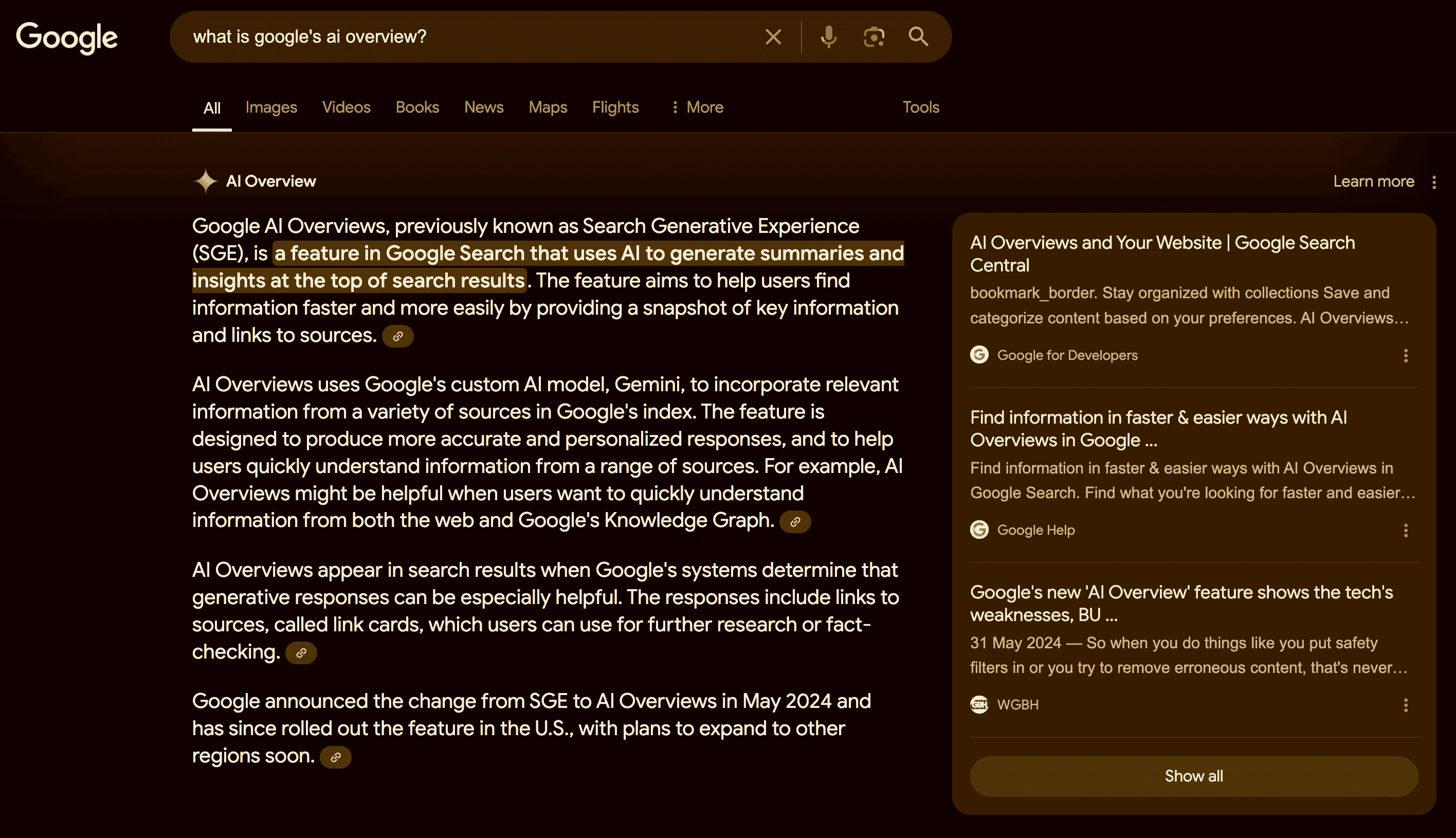UX and SEO: How to Optimize User Experience for Search Success
Last updated on Wednesday, October 4, 2023

Want to be at the top of the SERPs? Relying solely on keywords and backlinks — aka SEO strategies—won’t cut it anymore. Google now places much emphasis on user experience in its ranking criteria.
A great website must provide visitors with seamless navigation, cater to their interests, and quickly address the user’s intent behind the click that led them to their website.
UX and SEO are two sides of the same coin; both aim to craft intuitive sites that fulfill every user’s need. Dive deeper to discover how user experience factors can boost your SEO strategy.
What are UX and SEO?

Search engine optimization (SEO) refines aspects of the website— from layout and stock images to links and keywords on every page. The goal? Boost organic (free) traffic, improve SERP rankings for targeted search queries, and bolster the site’s niche authority.
UX, short for user experience, centers on the quality and clarity of user interaction with a website, ensuring visitors get an intuitive and enjoyable experience. This article covers everything from the website’s design to how users interact with it.
A good UI facilitates smooth navigation—organized content, intuitive screen elements, and clear, logical steps—allowing users to quickly do what they came for.
Does UX affect SEO?
Here’s a straightforward answer: Yes, UX affects SEO. Search engines consider more than just technical factors; they also analyze user behavior and the quality of experience websites offer.
Recall your searches, hopping between results until landing on the right page or being put off by clunky mobile designs with oversized text and images. Websites failing to meet user standards often slide down the SERPs, replaced by those offering a top-notch user experience.
Search engine algorithms assess user behavior based on UX signals like dwell time, engagement, bounce rate, and pages per session. These behavior metrics are pivotal in the UX and SEO landscape, helping search engines measure the user’s level of engagement and how relevant the page’s content is to the user’s search intent.
Knowing how UX and SEO play a role in your site’s success, here are some critical tips on using UX to elevate your SEO performance.
Understand the Search Intent
UX and SEO converge in how Google ranks sites: they prioritize those that best answer the user’s query. This makes getting the right keywords a big win, as they’re the primary way search engines identify relevant content. But understanding the heart of what users want is what you should ultimately aim for.

Rather than just aiming for the keywords top-ranked sites are ranking for, try to understand why Google favors them. Identify the question they’re answering and provide a better one.
If they’re looking for a specific media, that’s your chance to shine. Through the perfect blend of UX and SEO, give them the answer that covers what, how, and why they’re looking for. This might mean sourcing videos from sites that offer free stock videos and images to make your point hit home!
Focus on Page Speed
Google has long considered page speed in its ranking metrics. The loading time of your site is shaped by factors such as the selected website theme, active plugins, the number of embedded images and videos, and the efficiency of its code and server-side scripts.
A slow-loading page correlates with poor user experience, with a higher bounce rate and less time spent on the page. Solve this using a faster web-host server, compressing images, and optimizing codes.
Create a Better Web Page Experience
Your primary focus for employing an SEO UX combo strategy should be crafting content centered around user experience. The bottom line is to help them find the information fast.
Provide a clear copy that directs people in the right direction at a glance while eliminating the need to search too hard. A clear website copy lets them stay longer on your site and may even lead them to explore other pages.
Make sure to deliver value-packed answers. Consider adding graphs for an instant visual impact. You can utilize AI tools such as an AI writer and AI image generators for this!
Don’t forget to structure your content neatly. Think bullets, lists, headers, and images. Remember, bite-sized text chunks are always easier on the eyes. Ensure your content satisfies user intent and follows the best UX and SEO practices.
Make Navigation Intuitive and Simple
Aside from the content itself, pay attention to the website’s overall navigation. Ensure the site’s general layout and navigation make it easy for users to navigate.
Sure, search engines adore a well-structured site—it’s like giving them a clear map to crawl. But create excessively complex site structures, and you’ll have frustrated and confused users, leading to poor user experience and potential dips in rankings.
Instead, focus on how accessible the pages are to users. Create a clear, logical path users can easily follow as they navigate your site. This goes for both the entire website and individual pages—with content that has clear headers and CTAs.
If users can easily navigate your site, you’re not only ensuring better usability, but you’ll also get an SEO boost.
Adopt a Mobile Responsive Design
Since over half of website traffic comes from mobile devices and Google recommends using it, you should prioritize providing a positive user experience across devices.
Employ the best UX and SEO practices by paying attention to the overall experience of your mobile site, from the layout, text, images, and overall feel. Create a better mobile experience by opting for a simple design focusing more on usability and easy navigation.
It’s also important to note that Google does mobile-first indexing, which means that the search engine primarily considers the mobile version of your content for its indexing and ranking processes. So, dialing up your mobile optimization isn’t just friendly advice.
Use Clear Signals
Using intuitively designed buttons and strategically placed CTAs is a cornerstone of effective UX and SEO strategies. Make sure that UI elements are placed in easily recognizable spots, ensuring they stand out and are ready to help your visitors complete their tasks effortlessly.
Consider integrating a table of contents or drop-down navigation menus for content-rich pages to streamline navigation.
Keep in mind that Google rewards content that makes waves on social media. Amplify your UX and SEO game by making it effortless for users to share. Incorporate social share buttons on each page or consider pre-crafted, shareable quotes.
Boost Site Appeal Through Effective UI
Humans are visual by nature. The moment we land on a website, the first thing that grabs our attention is its visual aesthetics. Since any page could be a visitor’s first—or only—touchpoint with your brand, it should be capable of attracting and retaining your visitor’s attention.
Your web design affects both UX and SEO, too. Sites that appear cluttered or overly complex tend to push visitors away swiftly. Google sees quick exits (aka bounce rate) as a sign that your site isn’t valuable, which can lower its rank in search results.
But an effective UI design goes beyond visual aesthetics; it makes a website easy to use and matches the brand’s style, creating a consistent and enjoyable user experience.
When people find a website user-friendly, they tend to stay longer, explore more, and might even make a purchase or sign up, which can help the website’s visibility on search engines like Google.
Utilize Ads Popups Cautiously
Popups, integral parts of UI, can be powerful tools when appropriately implemented. They can actively reduce bounce rates and bolster user engagement by fostering better interaction with visitors. However, excessive or improper use can invite penalties and adversely influence SEO through diminished user experience.

So, make sure that your popups don’t make your content less accessible and avoid those that Google dislikes and has already penalized in the past. This includes new window popups that appear immediately upon page click, welcome mats, and overlay modals that redirect visitors or are challenging to close.
Ensure Consistent Branding
Achieving and maintaining consistent branding is crucial for optimizing both UX and SEO. However, consistent branding goes beyond visual elements, like color schemes and logos; it also entails uniformity in tone of voice, messaging, and values across all channels, platforms, and consumer touchpoints.
This uniformity builds a cohesive brand image and fosters trust and reliability with the audience. It’s about creating a seamless brand narrative that resonates with users, making interactions user-friendly and predictable.
Search engines prioritize and reward sites offering high-quality, relevant, consistent content with better rankings on SERPs, ultimately amplifying the brand’s reach and digital presence.
Conclusion
Sure, Google considers technical factors, but it also puts a premium on human behavior, as seen by how it ranks sites that satisfy users and provide relevant answers concerning their queries.
So, if you want solid rankings for your site, integrate UX and SEO into your website optimization strategy. Doing so lets you hit two birds—your user’s happiness and better site rankings—with one stone.

Article by:
Rachel Ann Tee-Melegrito
Freelance Content Writer
Rachel is a freelance content writer with hundreds of bylined and ghostwritten in the health, tech, SaaS, and business niches. She regularly contributes to sites like Medical News Today, iGeeksBlog, and MakeUseOf.




